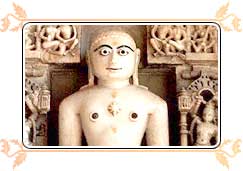The Dilwara Jain mandir of India are located about 2½ kilometers from Mount Abu, Rajasthan's only hill station. These temples dating back from the 11th to the 13th century AD are world famous for their stunning use of marble. The five legendary marble Dilwara temples are the sacred pilgrimage of the Jains. They are an overwhelming blend of simple beauty and exquisite elegance. The marble temples have an opulent entranceway. The simplicity in architecture verily reminds one that Jainism as a religion "encouraged honesty and frugality". The temples reside amidst mesmerizing surroundings of mango trees and wooded hills. A high wall, shimmering luminous in the sunlight, shrouds the temple complex.

Although the Jains built some beautiful temples at other places in Rajasthan but none come close to these in terms of architectural perfection of Dilwara temple in Rajasthan. The ornamental detail spread over the minutely carved ceilings, doorways, pillars and panels is simply marvellous and has to be seen to be believed.
Five Unique Dilwara Temples
There are 5 temples in all, each with its own unique identity though together they are named after the small village in which they are located. These are: